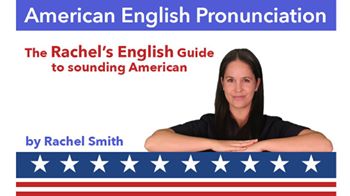В этом видео Рейчел объясняет, как в американском варианте английского произносятся согласные звуки, и какие значки международной фонетической транскрипции им соответствуют. Знать эти символы очень важно, так как в английском языке одна буква может выражать разные звуки. Чтобы уметь произносить слово правильно, порой просто необходимо заглянуть в словарь и расшифровать эти загадочные «изображения». На самом деле, все очень просто — не пугайтесь, если вы не все понимаете (или пока мало что понимаете;), внимательно смотрите видео с Рейчел, фокусируясь на главном, читайте наши объяснения и у вас все обязательно получится!
В этом видео акцент делается на соответствии согласного звука определенному символу в транскрипции, а не на произношении согласных звуков (произношению звуков будут посвящены дополнительные видео).
Главное в этом видео:
Запомнить символы транскрипции для звуков
dd /tt / vv/ ff/ bb/ pp/ gg/ kk/ межзубные с и з, th /zz /sh /zh /ch /jj /hh /rr /yy /mm /nn /ng /ll /ww.
Скрипты к видео:
Let’s take a look at the letter T. It can be silent, like in the word ‘fasten’, it can be pronounced CH, ch, as in the word ‘future’. It can be pronounced tt like in the word ‘tap’. When paired with the H, it can be th, the unvoiced TH, as in the word ‘thanks’. Or it can be th, the voiced TH, as in the word ‘this’. The letter T can actually represent various sounds. This is why the International Phonetic Alphabet makes it easier to study the pronunciation of foreign languages. This video focuses on consonants.
What is the International Phonetic Alphabet? It’s a system of phonetic notation, and I use it a lot on my website and when I teach students. I’ve also used it a lot when I’ve studied foreign languages. The IPA is especially handy when studying English because English is not a phonetic language. This means when you see a letter or a group of letters, it will not necessarily be pronounced the same in each word in which it occurs, just as in the example at the beginning of this video.
The IPA has a written symbol for each phonetic sound. So, this makes it easier to read about and write about pronunciation. As a student of pronunciation, it’s important that you become familiar with the symbols that represent the sounds of American English.
Dd, say that with me, dd. This sound is in dime, redo, smiled.
Tt, say that with me, tt. This sound is in washed, untie, tip.
Vv. This sound is in value, of, love.
Ff. This sound is in staff, enough, phone.
Bb, bb. This sound is in big, sob, abandon.
Pp, pp. This sound is in pan, ship, reapply.
Gg, gg. This sound is gap, exhibit, fog.
Kk, kk. This sound is in choir, quiet, back.
Th, th. This sound is in thanks, filthy, with.
Th, th. This sound is in bother, this, bathe. Ss, ss.
This sound is in ice, some, ax.
Zz, zz. This sound is in lazy, flowers, possess.
Sh, sh. This sound is in polish, ocean, issue.
Zh, zh. This sound is in beige, vision, azure.
Ch, ch. This sound is in chase, march, chapter.
Jj, jj. This sound is in joy, grudge, change.
Hh, hh. This sound is in happy, rehash, hi.
Rr, rr. This sound is in wrong, operate, ear.
Yy, yy. This sound is in yummy, yes. And it often occurs in the EW as in FEW diphthong in words like music.
Mm, mm. This sound is in words like my, mumble, some.
Nn, nn. This sound occurs in the words nine, no, undo.
Ng, ng. This sound occurs in the words ring, thanks, anger.
Ll, ll. This sound occurs in the words follow, lie, feel.
Ww, ww. This sound occurs in the word quiet, will, one.
Great. Familiarizing yourself with these symbols should make it easier to study pronunciation. That’s it, and thanks so much for using Rachel’s English.



